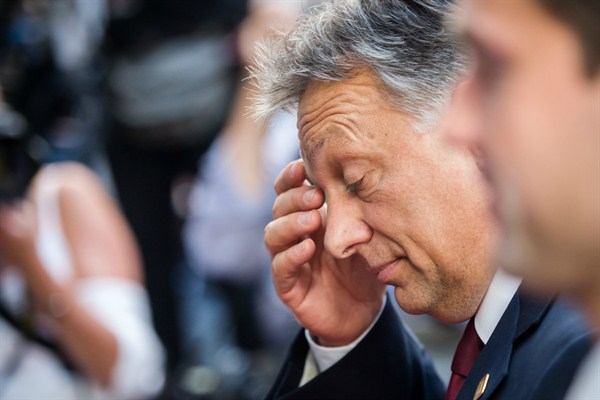Nations across Europe are commemorating the centennial of World War I, but in Hungary the bitter memory of the war has always lingered. Hungary lost two-thirds of its territory in the 1920 Treaty of Trianon, which left roughly one-third of ethnic Magyars in neighboring countries. Even today, maps with the pre-Trianon borders are a common sight in Hungary, a country whose nationalist drift is increasingly a source of alarm within the European Union.
In April, Prime Minister Viktor Orban’s conservative Fidesz party maintained its majority in parliament in national elections, which also saw 20 percent of the vote go to the extreme-right Jobbik party. Since then, Orban’s reactionary rhetoric has only increased, most notably in a speech last month in a formerly Hungarian town in Romania in which he rejected “liberal democracy” as the model for Hungary. Instead, Orban looked to non-Western models, proclaiming: “a trending topic in thinking is understanding systems that are not Western, not liberal, not liberal democracies, maybe not even democracies, and yet making nations successful. Today, the stars of international analyses are Singapore, China, India, Turkey, Russia.”
No head of state in the EU has ever so bluntly aligned with autocratic values, and Orban’s admiring reference to Russia is notable at a time when most European countries are engaged in an escalating trade war with Russian President Vladimir Putin. Orban represents a challenge to the EU’s core values, but it is unclear whether the union has any effective way of responding, despite demands for intervention from Hungary’s weak opposition parties. Such intervention would not be unprecedented: In 2000, the EU employed sanctions to force Austria’s far-right Freedom Party Chairman Jorg Haider out of a governing coalition. But Orban’s dominance in Budapest is likely to prove resilient.

